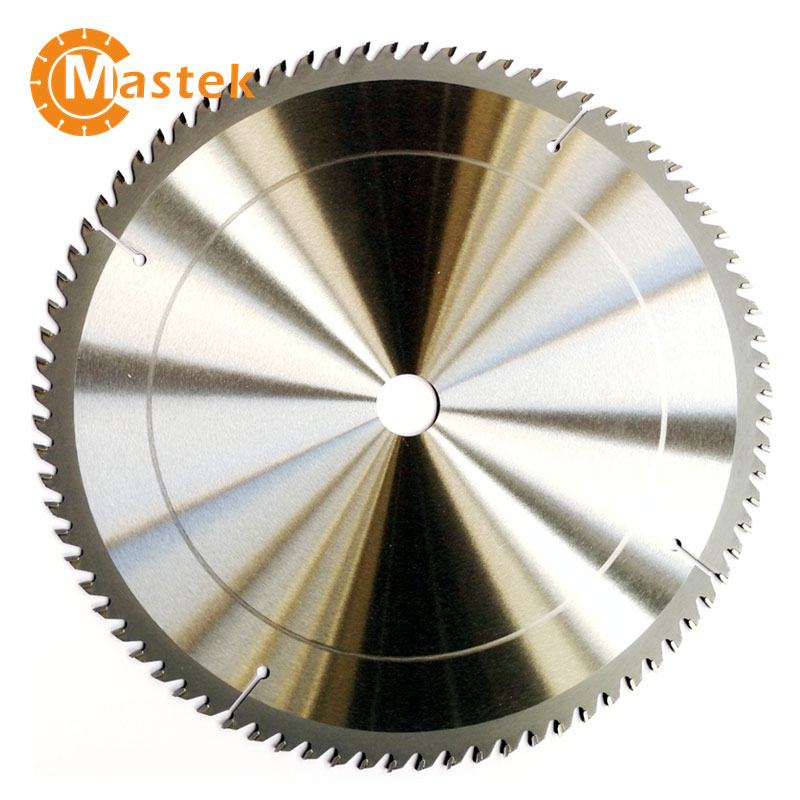How do TCT tools compare to traditional tools?
TCT Tools vs. Traditional Tools: A Cutting Edge Comparison
In the world of cutting and shaping materials, the tools we use play a pivotal role in determining the efficiency, precision, and overall outcome of our projects. As technology advances, new innovations arise to challenge the traditional methods we've relied on for decades. One such innovation is Tungsten Carbide Tipped (TCT) tools, which have gained prominence for their remarkable cutting performance and extended tool life. In this article, we'll delve into the comparison between TCT tools and traditional tools, highlighting the advantages and disadvantages of each, and exploring how TCT tools are transforming the landscape of various industries.
Understanding the Basics: Traditional Tools
Traditional tools have long been the cornerstone of various trades, from woodworking and metalworking to construction and beyond. These tools, often made from high-carbon steel or other alloy materials, have served as trusted companions for craftsmen and artisans over generations. While traditional tools have proven their worth, the introduction of TCT tools has sparked a new wave of possibilities.
Introducing TCT Tools: A Technological Leap
Tungsten Carbide Tipped (TCT) tools are a product of cutting-edge engineering and materials science. The cutting edges of these tools are embedded with tungsten carbide, a compound known for its exceptional hardness and wear resistance. This combination of hard material and precise engineering results in tools that excel in various cutting applications.
Advantages of TCT Tools
Durability: The standout feature of TCT tools is their longevity. Tungsten carbide's hardness makes TCT tools highly resistant to wear, ensuring that they maintain their cutting edge over extended periods of use. This durability translates to reduced tool replacement and increased cost-effectiveness.
Efficiency: TCT tools offer impressive cutting efficiency due to their sharpness and hardness. Whether it's slicing through wood, metal, or other materials, TCT tools require less effort and energy from the user, leading to faster and more precise cuts.
Reduced Maintenance: Traditional tools often require frequent sharpening and maintenance to sustain their cutting performance. TCT tools, on the other hand, need less frequent sharpening thanks to their inherent hardness. This translates to more uptime and productivity.
Versatility: TCT tools exhibit versatility in handling a wide range of materials, from hardwoods and metals to plastics and composites. This adaptability makes TCT tools a go-to choice for professionals working across different industries.
Clean Cuts: The sharp and durable edges of TCT tools result in cleaner cuts with reduced chipping and splintering. This is particularly crucial in applications where precision and aesthetics are paramount, such as woodworking and fine arts.
Traditional Tools: Retaining Their Place
While TCT tools offer undeniable advantages, traditional tools continue to hold their place in various scenarios:
Initial Cost: Traditional tools often have a lower upfront cost compared to TCT tools. This makes them accessible to hobbyists, DIY enthusiasts, and those with budget constraints.
Specific Applications: In some specialized applications, traditional tools are preferred due to their unique characteristics. For example, certain hand tools excel in delicate and intricate tasks where fine control is essential.
Repairability: Traditional tools can often be easily repaired or sharpened by skilled craftsmen. This DIY approach can extend the life of the tool and save costs.
A Comparative Analysis: TCT Tools vs. Traditional Tools
Let's explore the comparison between TCT tools and traditional tools across different aspects:
Cutting Performance
TCT Tools: TCT tools offer superior cutting performance due to the hardness of tungsten carbide. They can effortlessly cut through various materials, including hardwoods, metals, plastics, and composites.
Traditional Tools: Traditional tools provide effective cutting performance, but they might require more effort and frequent sharpening to maintain their edge.
Tool Longevity
TCT Tools: The durability of TCT tools leads to longer tool life, resulting in fewer replacements and reduced downtime.
Traditional Tools: Traditional tools might have a shorter lifespan and require more frequent replacements or maintenance.
Precision and Clean Cuts
TCT Tools: TCT tools provide precise and clean cuts with minimal chipping or splintering, making them suitable for applications requiring high accuracy.
Traditional Tools: While capable of producing clean cuts, traditional tools might have a higher likelihood of chipping or splintering, especially in demanding applications.
Versatility
TCT Tools: TCT tools are versatile and can handle a wide range of materials, making them suitable for professionals working across multiple industries.
Traditional Tools: Traditional tools can be versatile, but their effectiveness might vary depending on the material and application.
Initial Cost and Investment
TCT Tools: TCT tools often have a higher upfront cost due to the advanced materials and technology involved in their production.
Traditional Tools: Traditional tools tend to have a lower initial cost, making them a more accessible option for those on a budget.
Maintenance and Sharpening
TCT Tools: TCT tools require less frequent sharpening due to the hardness of tungsten carbide. However, when sharpening is needed, it might require specialized equipment or professional services.
Traditional Tools: Traditional tools might require more frequent sharpening and maintenance, but the process can often be done by skilled individuals.
In Conclusion
The comparison between TCT tools and traditional tools showcases the evolution and innovation in the realm of cutting and shaping materials. TCT tools have introduced a new level of cutting performance, durability, and efficiency that cater to the demands of modern industries. However, traditional tools still have their place, particularly in scenarios where initial cost, specialized applications, and repairability are key factors.
Ultimately, the choice between TCT tools and traditional tools depends on the specific requirements of the task at hand, the materials being worked with, and the preferences of the user. As technology continues to advance, we can expect further refinements in both TCT and traditional tools, offering professionals and enthusiasts an ever-expanding toolkit to bring their creative visions to life.
Buy low price, high quality tct tools, choose our products, Mastek is the leading company. Warmly welcome new and old customers to visit!
227
0
0



Comments
All Comments (0)